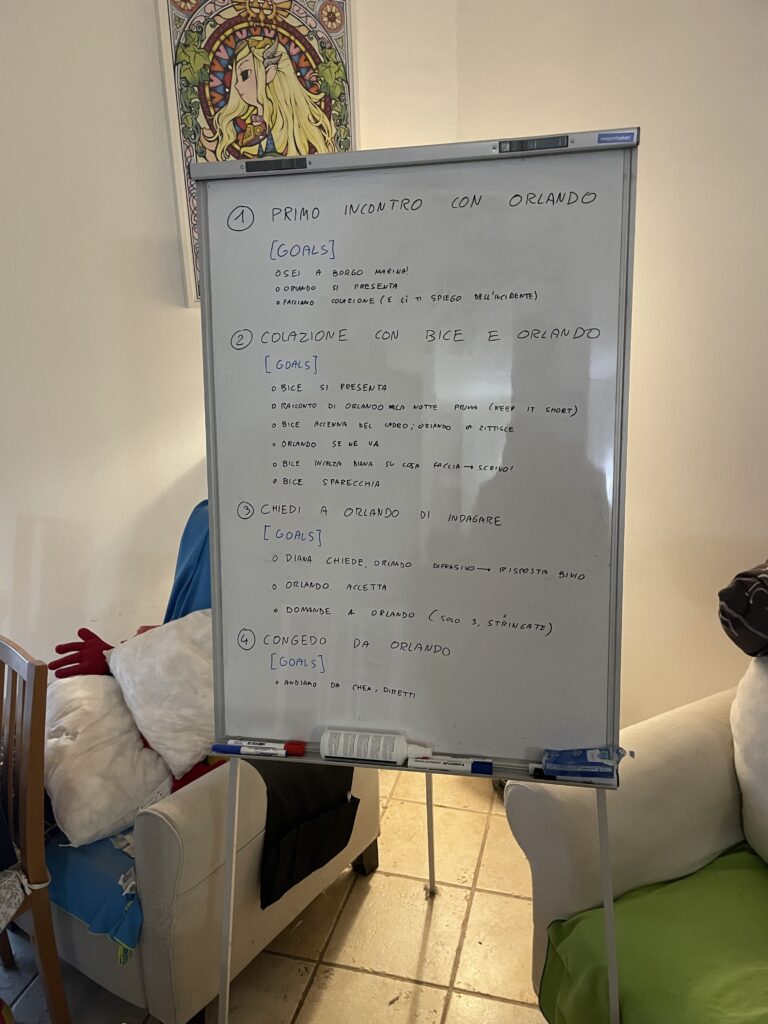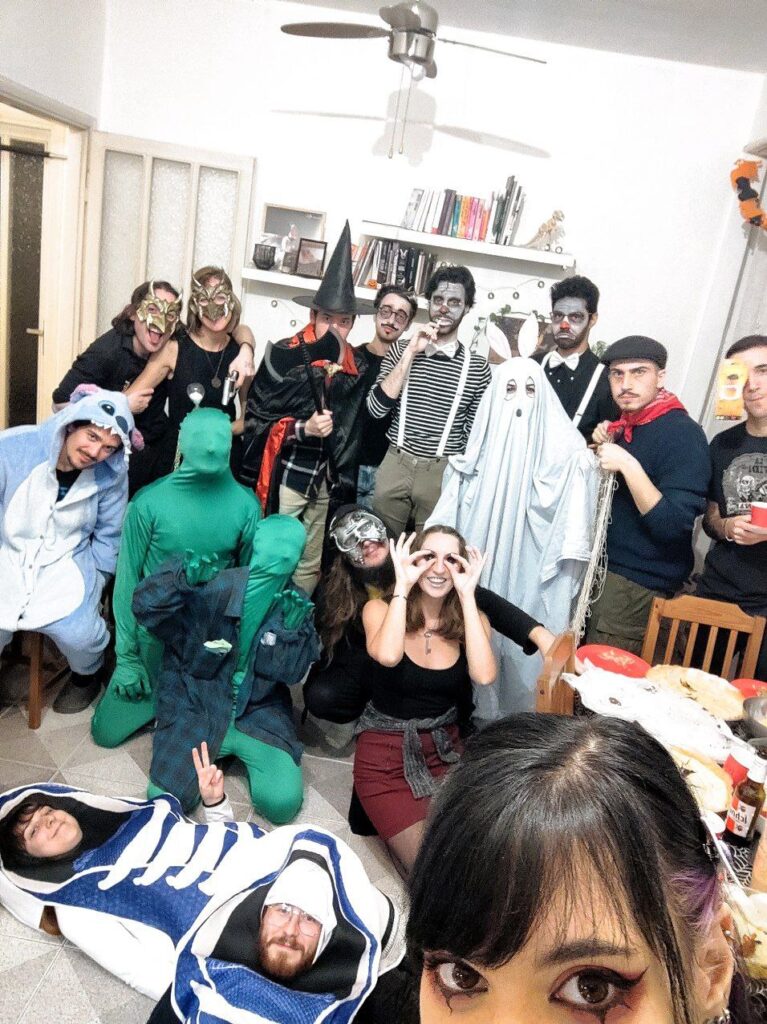I could summarize my experience working on On Your Tail in three words: building, experimenting, and collaborating.
Building

When I started working on the project as a narrative designer, there were only a terse outline and some thin character backgrounds (that had become outdated, as well).
We (my fellow narrative designer and I) took those materials and elaborated them to the fullest.
It took months, but in the end we delivered:
- a complete outline of the main story;
- a plot detailing the presentation of the story through the golden path;
- detailed backgrounds for the main NPCs (28 good fellows);
- new secondary NPCs (more than 100, shortly but poignantly conceived); and
- a foundational world-building to inform the future production of content.
Experimenting
I experimented often, since the design team was relatively small, the project was big, and a narrative designer was needed everywhere. So I wore many masks.

Half of my time was spent plotting on a whiteboard

The other half was spent writing dialogues and untangling Articy-related spaghetti
I was a writer, of course! I wrote thousands of lines of dialogue. At the same time, I was collaborating with the Art team to craft storytelling-rich environments, and designing quests with the gameplay designers.
I also spent a lot of time implementing content: we used Articy Draft coupled with Unity. Moreover, we believed that writers should be as autonomous as possible while working on the game: we wanted the narrative pipeline to require the least outside input possible.
Hence, I created and tested large chunks of logic myself.
I even did some team leading, since the narrative team grew to three people and I helped the design director in steering the wheel. I provided feedback on dialogues, managed brainstorming sessions, kept track of the tasks, and helped the design director in planning the content production.
All in all, I was very fortunate. Indeed, I had what a developer needs most when starting their career: the occasion to learn many and different things.
Collaborating

You may have noticed that in the previous paragraphs I employed many times the word “we”. It’s because my experience working on On Your Tail was inherently collaborative, as was my growth.
In fact, I was in a talented team of wonderful people. Many of my colleagues were at their first experience, but all of them were incredibly talented. I wouldn’t have gained so much experience hadn’t been for them.